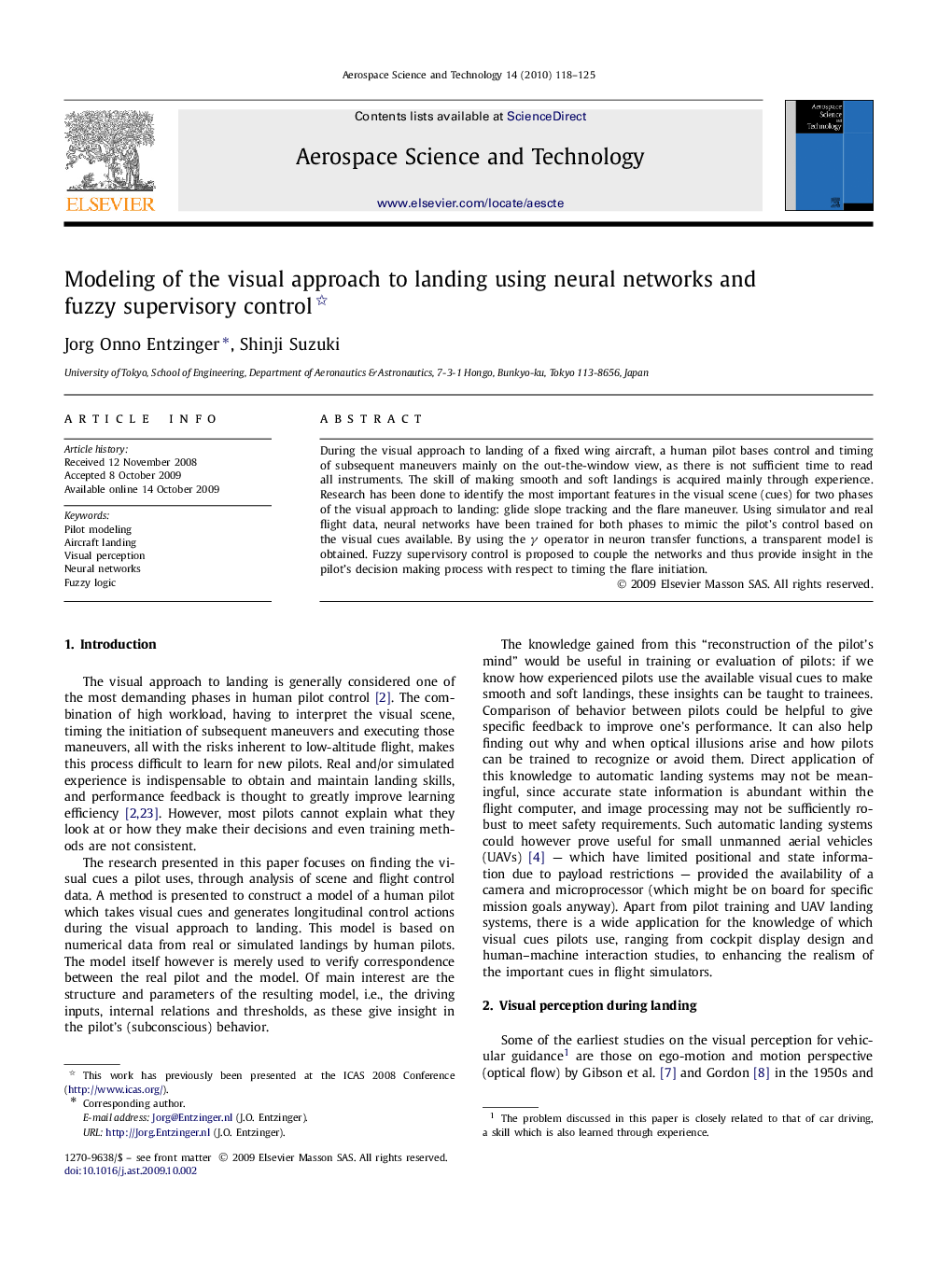| Article ID | Journal | Published Year | Pages | File Type |
|---|---|---|---|---|
| 1718734 | Aerospace Science and Technology | 2010 | 8 Pages |
During the visual approach to landing of a fixed wing aircraft, a human pilot bases control and timing of subsequent maneuvers mainly on the out-the-window view, as there is not sufficient time to read all instruments. The skill of making smooth and soft landings is acquired mainly through experience. Research has been done to identify the most important features in the visual scene (cues) for two phases of the visual approach to landing: glide slope tracking and the flare maneuver. Using simulator and real flight data, neural networks have been trained for both phases to mimic the pilot's control based on the visual cues available. By using the γ operator in neuron transfer functions, a transparent model is obtained. Fuzzy supervisory control is proposed to couple the networks and thus provide insight in the pilot's decision making process with respect to timing the flare initiation.
